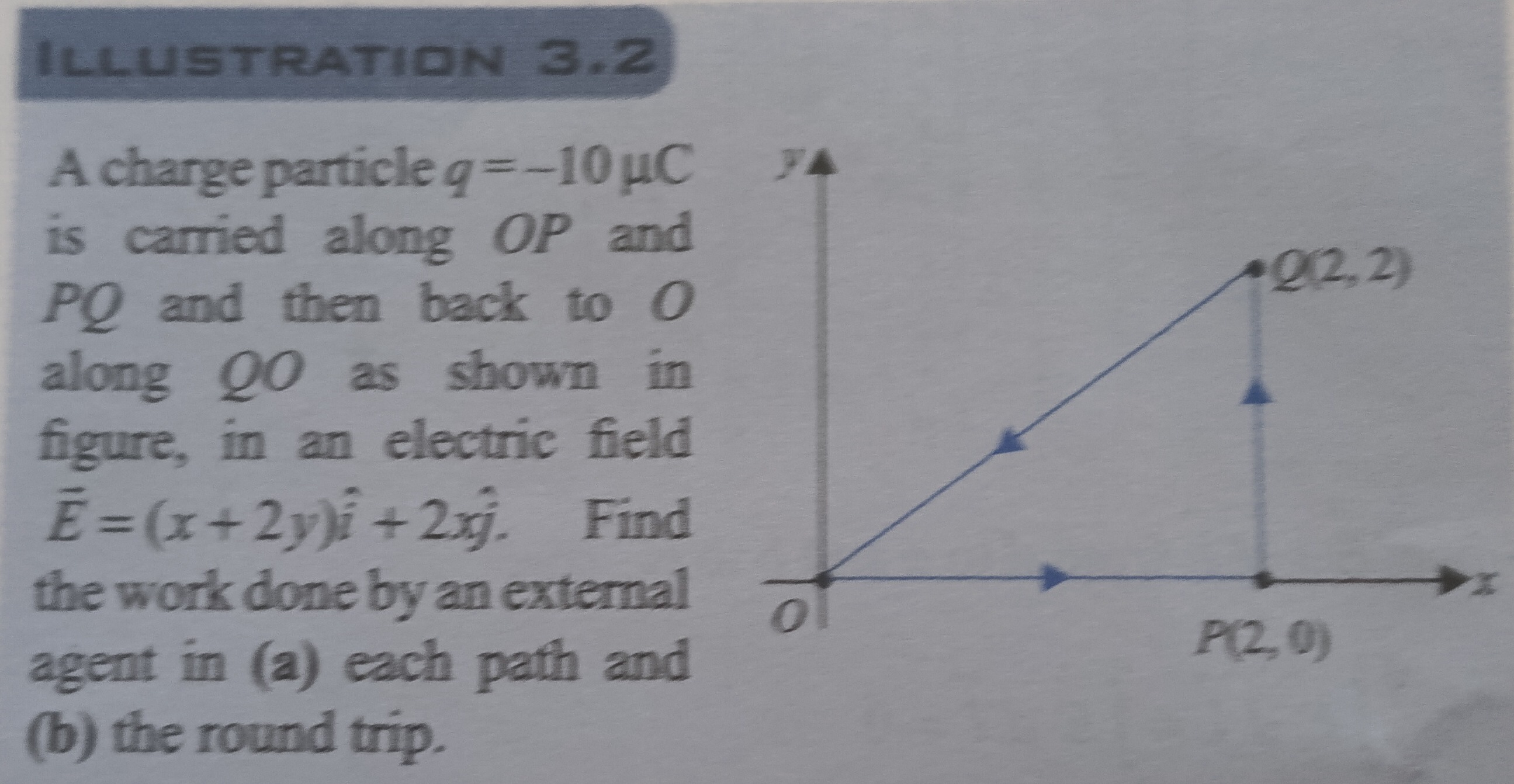Question
Question: **ILLUSTRATION 3.2** A charge particle q=-10µC is carried along OP and PQ and then back to O along ...
ILLUSTRATION 3.2
A charge particle q=-10µC is carried along OP and PQ and then back to O along QO as shown in figure, in an electric field E=(x+2y)i^+2xj^. Find the work done by an external agent in (a) each path and (b) the round trip.

- Path OP: +20μJ
- Path PQ: +80μJ
- Path QO: −100μJ
- Round Trip: 0J
Solution
We first note that the given electric field
E=(x+2y)i^+2xj^is conservative because
∂y∂(x+2y)=2and∂x∂(2x)=2.Thus, we can introduce a potential function V(x,y) such that
E=−∇V.- Find the potential function V(x,y):
From
Ex=−(∂x∂V)=x+2y⟹∂x∂V=−(x+2y).Integrate with respect to x:
V(x,y)=−2x2−2xy+f(y).Next, using
Ey=−∂y∂V=2x⟹∂y∂V=−2x.But from our expression,
∂y∂V=−2x+f′(y).Equating gives f′(y)=0 so that f(y) is a constant. We may take the constant as zero. Thus,
V(x,y)=−2x2−2xy.- Work done by the external agent:
For slow (or quasi-static) displacement, the work done by the external agent is equal to the change in the potential energy of the charge. Since the potential energy is U=qV and q=−10μC=−10×10−6C, we have:
Wext=ΔU=q(Vfinal−Vinitial).-
Path OP: (from O(0,0) to P(2,0))
V(0,0)=−202−2⋅0⋅0=0,V(2,0)=−2(2)2−2⋅2⋅0=−24=−2. ΔVOP=V(2,0)−V(0,0)=−2−0=−2.Thus,
WOP=qΔVOP=(−10×10−6)(−2)=+20×10−6J. -
Path PQ: (from P(2,0) to Q(2,2))
V(2,0)=−2(from above),V(2,2)=−2(2)2−2⋅2⋅2=−24−8=−2−8=−10. ΔVPQ=V(2,2)−V(2,0)=−10−(−2)=−8.Then,
WPQ=qΔVPQ=(−10×10−6)(−8)=+80×10−6J. -
Path QO: (from Q(2,2) to O(0,0))
V(2,2)=−10,V(0,0)=0,so,
ΔVQO=V(0,0)−V(2,2)=0−(−10)=+10.Hence,
WQO=qΔVQO=(−10×10−6)(10)=−100×10−6J.
- Round Trip:
The total work done by the external agent over the closed path OP→PQ→QO is:
Wtotal=WOP+WPQ+WQO=20×10−6+80×10−6−100×10−6=0J.(This is expected since the field is conservative.)
